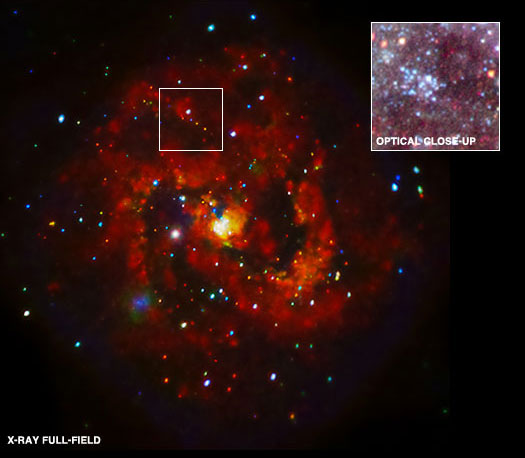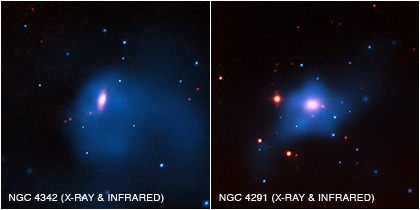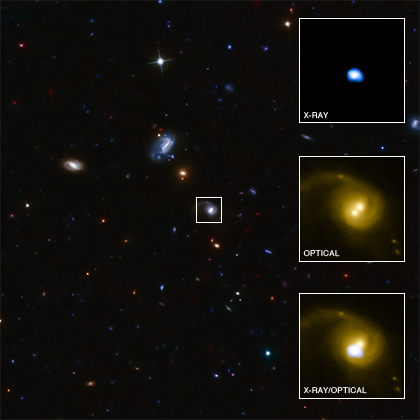Astrophysics and the Olympics
It's not every day that we can mention "Chandra" and the "Olympics" in the same sentence, but today we can. That's because Stacie Powell, who will compete in the 10-meter platform diving competition for Great Britain at the London Olympics beginning today, is also working on her Ph.D. in astrophysics.
X-Rays Discovered from Young Supernova Remnant
Over fifty years ago, a supernova was discovered in M83, a spiral galaxy about 15 million light years from Earth. Astronomers have used NASA's Chandra X-ray Observatory to make the first detection of X-rays emitted by the debris from this explosion.
Intrepid Meets the Enterprise
Last week, the Intrepid Sea, Air, and Space Museum welcomed a very unusual guest (who will be staying quite a while): the Space Shuttle Enterprise. The Intrepid, which is located on the Hudson River in New York City, will be the Enterprise's new home now that the Shuttle program has officially ended.
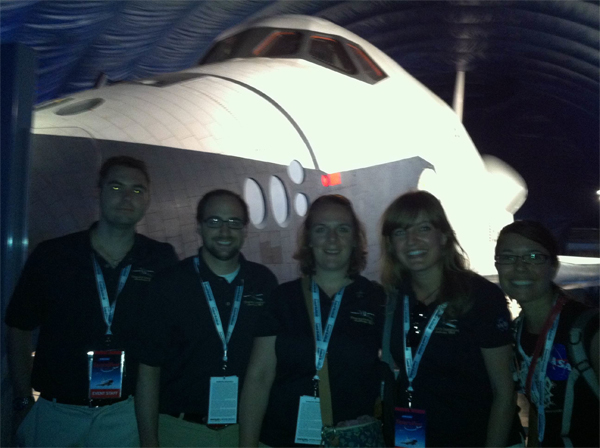
LUCKY 13
A little bit after midnight (12:31 am EDT to be exact) on July 23, 1999, the Space Shuttle Columbia lifted off from the Kennedy Space Center in Florida. Onboard was what was then the largest payload ever carried by a Shuttle: the Chandra X-ray Observatory.

AstroPoetry, 2012 (Part Two)
Following the success of our first poetry competition last year, the Chandra X-ray Observatory and Jonathan Taylor, Senior Lecturer in Creative Writing, have now run a second competition, in which Creative Writing students at De Montfort University in the U.K. were invited to write poems inspired by some of Chandra's findings. The final two entries of the four winning pieces are included here. Congratulations to all four winners.
Meet An Astronomer: Pat Slane
Pat Slane, a scientist at the Harvard-Smithsonian Center for Astrophysics, is a very busy guy. In addition to being the head of Chandra's Mission Planning group, he also conducts his own independent research into the study of supernova remnants and neutron stars (the aftermath of the massive stars that have exploded.) He also takes the time to participate in outreach, including heading up the "Stop for Science" project. Despite his hectic schedule, Pat sat down with the Chandra blog to discuss how he got where he is today in his career.
Picturing the Origin of a Press Release
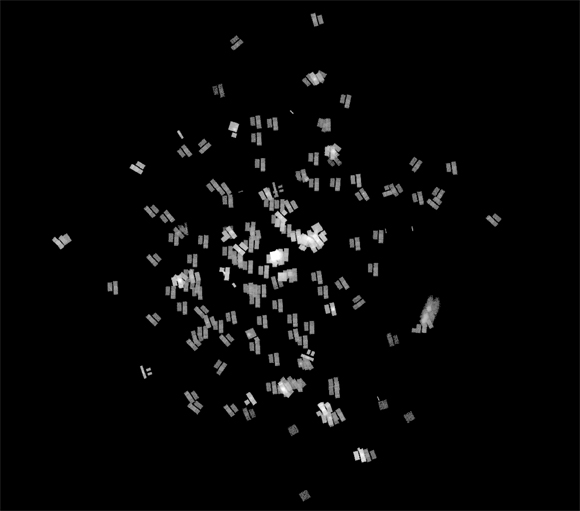
What does this image show? It looks very different from images that typically appear on our web-site, of galaxies and star clusters and exploded stars. It looks vaguely like a swarm of moths but with rectangular shapes that don't really look like wings. It might also pass for abstract art.
The answer is an astronomical one: this is a large mosaic showing Chandra observations from its archive centered on the Virgo Cluster. The rectangles are sets of charge-coupled devices (CCDs) on Chandra, showing X-ray emission from hot gas in the cluster's atmosphere, or around black holes. The rectangles often come in pairs because this is how a common configuration of Chandra CCDs appears on the sky: two square CCDs next to a set of three. The observations are scattered around because they targeted many different galaxies in and around Virgo.
Black Hole Growth Found to be Out of Synch
New results based on the two objects shown here are challenging the prevailing ideas as to how supermassive black holes grow in the centers of galaxies. NGC 4342 and NGC 4291, the two galaxies in the study, are nearby in cosmic terms at distances of 75 million and 85 million light years respectively. In these composite images, X-rays from NASA's Chandra X-ray Observatory are colored blue, while infrared data from the 2MASS project are seen in red.
Astronomers had known from previous observations that these galaxies host black holes with unusually large masses compared to the mass contained in the central bulge of stars. To study the dark matter envelopes contained in each galaxy, Chandra was used to examine their hot gas content, which was found to be widespread in both objects.
The Science of Black Hole Kicks: An Interview with Avi Loeb

For more context on CID-42 and the science of black hole kicks, we interviewed Professor Abraham (Avi) Loeb, one of the co-authors of the new paper. Avi is the director of the Institute for Theory and Computation, within the Harvard-Smithsonian Center for Astrophysics, and he is currently serving as Chair of the Department of Astronomy at Harvard University. He was recently elected to become a member of the American Academy of Arts & Sciences. Avi has worked on a wide variety of topics in astrophysics, including cosmology, black holes, gravitational lensing by planets and gamma-ray bursts in the distant Universe.
Q: How significant do you think this result is?
A: CID-42 is the best candidate for a massive black hole that might have been kicked out of the center of a galaxy with a high speed. An interesting mechanism for obtaining such a kick involves the merger of two black holes into the kicked black hole.
AstroPoetry, 2012
Following the success of our first poetry competition last year, Chandra X-ray Observatory and Jonathan Taylor, Senior Lecturer in Creative Writing, have run a second competition, in which Creative Writing students at De Montfort University in the U.K. were invited to write poems inspired by some of Chandra’s findings and research areas. For the first installment, two out of the four winning entries are shown below (See also part two). All of the entries explore, in their different ways, the overlap between poetry and scientific discovery. Congratulations to the winners and everyone involved for making this unique competition possible.
You can read other student poems inspired by Chandra here and here. Jonathan Taylor's own three poems for Chandra include:
Black Hole in B-Flat
History Lesson
!!**&@??
Nickname GRS 1915
embracing
the evaporating definitions
of space and time
blurred
like the disk clothing me
matter
in a fight
of gravitation
and radiation

